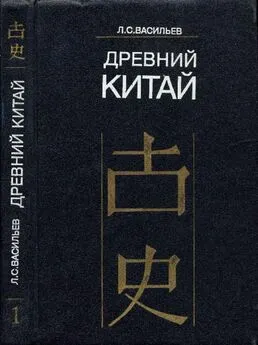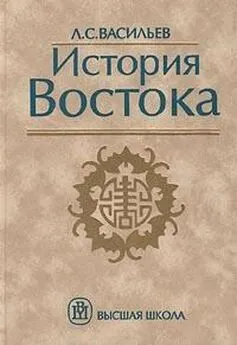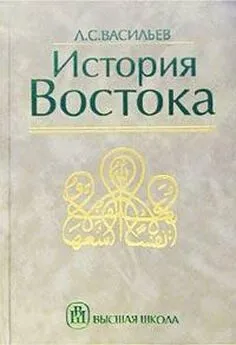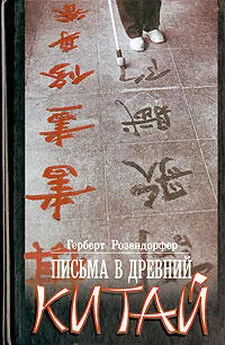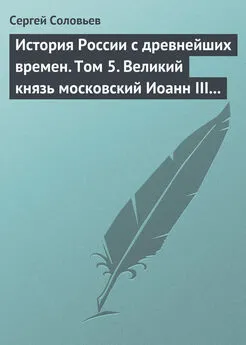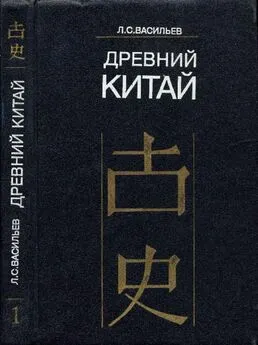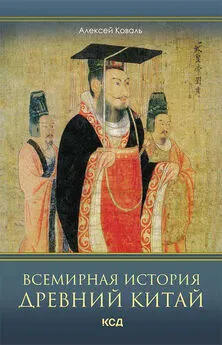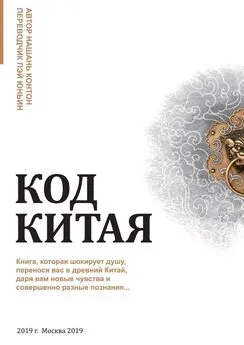Леонид Васильев - Древний Китай. Том 3: Период Чжаньго (V—III вв. до н.э.)
- Название:Древний Китай. Том 3: Период Чжаньго (V—III вв. до н.э.)
- Автор:
- Жанр:
- Издательство:Восточная литература
- Год:2006
- ISBN:5-02-018466-7
- Рейтинг:
- Избранное:Добавить в избранное
-
Отзывы:
-
Ваша оценка:
Леонид Васильев - Древний Китай. Том 3: Период Чжаньго (V—III вв. до н.э.) краткое содержание
Заключительный том трехтомника «Древний Китай» посвящен последнему периоду существования династии Чжоу, так называемой эпохе Чжаньго («Сражающиеся царства»). Рассказывается о политической истории этого времени (V–III вв. до н. э.), об искусстве дипломатии, о реформах, способствовавших усилению прежде отсталого царства Цинь, которое, одолев соперников, основало первую в истории Китая империю. Преимущественное внимание в томе уделено переменам в характере и облике древнекитайского общества, прежде всего процессу его радикальной дефеодализации, а также развитию главных школ древнекитайской мысли, которые, особенно конфуцианство, легли в основу успешного развития китайской цивилизации вплоть до наших дней.
Древний Китай. Том 3: Период Чжаньго (V—III вв. до н.э.) - читать онлайн бесплатно полную версию (весь текст целиком)
Интервал:
Закладка:
Here we have an extremely important text. For the first time, China produced a thinker who, contrary to the accepted norm and having no predecessors to lean upon, delved deeply into mysticism and created impressive metaphysi-cal-cosmogonic constructs. He has been to places that none of the Chinese has been to; he has seen that which none of them has seen. He spoke assuredly of the time when Heaven and Earth have not yet emerged and darkness prevailed; he stated that China was merely one eighty-first part of the Under-Heaven. Where Tsou Yan could have borrowed these ideas from? They were well known to Indian thinkers who wrote about the nine dvipa continents, each of which in turn consisted of nine parts. Tsou Yan discussed problems of cosmogony in earnest, though all earlier Chinese thinkers were completely indifferent to them. Besides, he spoke of the incessant circulation of certain "five te [substances]", which were obviously somehow related to the wu-hsing proto-elements. He also pondered over the rise and fall of the yang and yin forces, which corresponds so fully to the Iranian idea of the eternal struggle between the forces of Good and Evil, of Light and Darkness. The Tsou Yan phenomenon remains an enigma [304] , just like many things associated with Taoist philosophy, starting with Chuang-tzu (369–286 B.C.).
We mean here the mysterious origin of those ideas, including mythology, which appears for the first time in Chinese writings (we refrain from discussing oral tradition, as it is hard to say something definite regarding it) and is widely represented in the Chuang-tzu. The book in question is one of the most interesting in the Ancient China. In addition to profound metaphysical constructs that are entirely foreign to any earlier Chinese text, it contains a huge number of parables, anecdotes, myths and short essays on abstract topics.
Chuang-tzu's metaphysics and cosmogony proceed from the assumption that the Universe was created out of the original Chaos and that its creation is related to the Great Tao (the Tao of Taoism, which differs from the Tao of Confucius) — a certain Supreme Absolute, extrinsic to the phenomenal world and undetectable by the senses. Те is an emanation of Tao [305] . Tao is everywhere and nowhere, it pervades everything and it lies at the bottom of the cosmogonic process. The ideas of Chuang-tzu — like those of Tsou Yan — are very unorthodox for Ancient Chinese thought. It is very hard to believe that they could have popped up out of the blue, in a country where no one took interest in such things before. Well, there is no need to believe that. One has but to pick up, for instance, an unassuming chrestomathy titled Ancient Indian Philosophy (Drev-neindiyskaya filosofiya, Moscow, 1972; in Russian) to find very similar in nature — though much more refined and elaborated — constructs of the Rigveda and Upanishads. They contain the same ideas: the Great Brahman-Absolute and its emanation Atman, the existent and non-existent, Chaos and the emergence of the One, the latter's association with thought (the Word, Logos), the original emptiness so favored by Chuang-tzu.
Here is another important detail to be added to what was said above: the Chinese term ch 7 (lit. "air") was given by Taoists a new meaning: "vital force", "energy" and the like. According to them, the universe turned out to be permeated with the vigorously circulating ch 7 proto-substance. It is this ch 7 complex that Taoists equate with life. If such a complex disintegrates, then life ends. If a new complex of this kind forms, then a new life is created. The idea of reincarnation — which was so thoroughly developed in Ancient India and totally unknown in China until the time of Chuang-tzu's publication — was first clearly set forth in the just mentioned work. In addition to ch 7 "at large", Taoist text begin to mention "the finest/subtlest cA7" (pi.; ching-ch'i), whose presence enables spiritual life in man and in all animate beings. The Chandogya Upani-shad (VI, 7–8) states that food consists of three parts. The coarsest part eventually forms excreta, the intermediate part is digested by the body and feeds it, and the finest part becomes — in humans — their breath, thoughts and words. Another version of the text present the same idea in a somewhat different context: the fine substance is that which makes salt salt, a mosquito a mosquito, and a tiger a tiger; i.e., the finest is the base of the essence (the quality of being itself) in all things and of spirituality in man.
So, Taoist philosophy, as regards its basic innovative ideas — let us put it as gently as we can — is not entirely free (to say the least) from extraneous influences. The twofold source of that influence is the Indo-Iranian metaphysical thought. The content of the most widely known work of Taoist philosophy, the Tao-te ching ascribed to Lao-tzu, attests to the same. The pithy dicta of that extremely profound and structurally complex text are really impressive. Most likely, it was written later than the Chuang-tzu, though there are several versions that allow of different opinions. However, what really deserves attention is the problem of its authorship.
The work is attributed to Lao-tzu, there are no other "claimants" to its authorship. In this connection, it is extremely interesting that Lao-tzu — allegedly a senior contemporary of Confucius — seems to be, most likely, a figment of Chuang-tzu's imagination. No text mentions Lao-tzu's name prior to the work of Chuang-tzu. But there is more to it than just that. It is more important to realize why Chuang-tzu needed that old man, who subsequently became wrapped in legend. This is not difficult to realize. Chuang-tzu (like Tsou Yan, for that matter) put forward some ideas that were completely unheard-of in China. However, unlike Tsou Yan's ideas — that were, for all their cardinal importance, easy to understand, — Chuang-tzu's suggestions seemed rather vague. It appears that, initially, even the wisest ones were unable to grasp his ideas. So Chuang-tzu experienced an urgent need for a valid basis that would have very ancient roots, for the Chinese highly valued nothing but old tradition. So he invented a certain "Old Man" who was nearly Confucius' precursor (this temporal tie-in is most important), who had the nerve to lecture the Master haughtily, while the latter allegedly accepted with meekness wisdom thus imparted.
On the other hand, the above-mentioned does not mean that the new ideas were solely the result of extraneous influence. Two important additions must be made. Firstly, the Chinese, including Taoists, tended to mix foreign innovations with old, well-known stories and examples from Chou and even pre-Chou history, which greatly reduced the general bewilderment of those who read the Chuang-tzu for the first time. Secondly, they were expert in grasping and subtly perceiving extraneous ideas in their own individual way, making them Chinese "on the fly". Both the specifics of the hieroglyphic writing and Ле difficulty of rendering foreign words, let alone special terms, greatly contributed to this. Thus the Taoist philosophy, which was alien to the Ancient Chinese pragmatism, was establishing itself.
The latter half of the Changkuo period was not only the time of competition between different schools of Ancient Chinese thought but also the time of their co-operation. This resulted in a number of works of an encyclopedic nature different chapters of which were written by scholars of different schools. Among them are the Kuan-tzu and the Lui-shih ch'unch'iu encyclopedias. However, this did not lead to a success of Confucian ideas. It is noteworthy that the numerous followers of the ju school (this was a common name for Confucians) did everything humanly possible to increase the influence of their doctrine, which so complied with the spirit of tradition. However, the uncompromising stance taken by the most influential among them (especially Meng-tzu) put rulers of the states off Confucianism. It impeded the advance of Confucianism in comparison with other competing doctrines, primarily Legism, which demonstrated its advantages. It is hardly surprising, then, that Legism in a variety of versions — most often milder ones than Shang Yang's — occupied a very prominent place in the Kuan-tzu. This situation lead, in the late Chankuo period, to Hsiun-tzu's (the third greatest Confucian of Chinese antiquity) becoming nearly a direct opposite of Meng-tzu. The fact that the two sages differed on the vital issue of man's nature (Meng-tzu believed that man was essentially good but the hardships of life spoiled him; Hsiun-tzu, on the contrary, proceeded from the assumption that man was full of vice and only education made him decent) was only part of that opposition. What mattered much more was that Hsiun-tzu — as well as Meng-tzu, by the way, — perfectly realized that Confucianism was rapidly losing its former prestige at the end of the Chou era. Besides, Hsiun-tzu realized that the doctrine was going to disappear altogether, unless its adherents dropped the uncompromising attitude of Confucius and Meng-tzu. While Meng-tzu saw the salvation of the teaching in the harsh condemnation of its opponents, Hsiun-tzu managed to realize, just in time, that the true solution lay elsewhere.
The Hsiun-tzu informs us that, while young, Hsiun-tzu paid a visit to the state of Ch'in and found many things there worthy of imitation as examples of an acceptable norm. This referred, first of all, to the strict social discipline of the people who were trained to observe laws, order and norms. Of course, Confucians were all for norm and discipline. However, to attain strict adherence to them, they relied on upbringing and the ethical traditions established by the Master. At the same time, experience proved irrefutably that the "stick" was by far the most efficient part in the old "carrot-and-stick" formula. So Hsiun-tzu— who personally stood for the predominance of proper upbringing in the correction of people — managed to see this; moreover he realized that, unless some of the Legist "stick" was added to the Confucian "carrot", the ju school was doomed in the nearest future. So he had to resort to forgery. In his work, Hsiun-tzu showed a Confucius that somewhat differed from the man he really was.
Among other things, Hsiun-tzu concocted a story of a certain shao-cheng Mao who allegedly corrupted the minds of the youth of Lu with forbidden speeches, for which he was executed by Confucius' orders. However, it is known that Confucius never possessed political power. Besides, he would have never dreamed of killing anyone for wrong words. Finally, no texts of Confucius' time mention a shao-cheng called Mao. Hsiun-tzu knew all this better than anyone. So what was the matter? The answer is very simple. Hsiun-tzu wanted the Great Master to take a stick in his hands. This was necessary for imparting a certain strictness to the doctrine, without which it would not succeed. And Hsiun-tzu did the necessary thing, without which the doctrine of the Great Master would be unable to develop and spread in the late Chou society. By doing this, though, he took a step in Shang Yang's direction. It is small wonder that his two best disciples, in whom any sage could feel great pride, the theoretician Han Fei-tzu and the prime minister of the emperor Ch'in Shih-Huangti Li Ssu (he was the actual author of the strictly ordered structure of the Ch'in Empire) turned out to be Legists.
Hsiun-tzu's little trick saved Confucianism as a doctrine suitable for ruling the state; furthermore, it ensured (in combination with historical developments that, too, played a major part in this) its lasting success for more than two thousand years. And still, despite this great service to the doctrine, to which he (unlike his disciples) kept a lifelong loyalty, Hsiun-tzu dearly paid for having distorted the essence of the Master's image. His work, unlike the above-mentioned Meng-tzu, was never included into the Confucian canon.
Читать дальшеИнтервал:
Закладка:
